
Product test
Microsoft Surface Pro 6: Top device that convinces, but I still won't buy it
by Martin Jud

Microsoft's new 10-inch tablet looks good with its magnesium alloy. But looks aren't everything. That's why I tested it extensively, was annoyed by Windows' S mode and enjoyed playing Civilisation VI.
"So this tablet is supposed to be a 2-in-1 device?" My first thought about the new Surface Go is not as expected.
I've just got my hands on it. Now would be the time to marvel at the neatly finished device with its magnesium casing (and 3.5 mm jack connection) with a long "Oooh", but I'm annoyed that the keyboard (Type Cover) has to be bought separately. Just like the Surface Pen. Too bad; this review will have to do without the beautiful drawings and curved characters.
Luckily, I get the keyboard with the test device. That makes me feel a bit more exclusive. However, I mustn't forget to think from the user's perspective. So I put on a grim face, at least on the outside, and switch it on.
This is what the Microsoft Surface Go offers you:
If you are interested in the cheaper model (4 GB RAM and 64 GB eMMC), the Type Cover or the Surface Pen, you can get help here:
First of all, I have to share my first impression of the pre-installed Windows version. Because it can really raise your blood pressure. At least if you haven't been warned and are using Windows in S mode for the first time.
In S mode, you can only install new software from Microsoft's own store. The problem with this is that, for example, only one browser is available in the Store for alleged security reasons: Microsoft Edge. If you want Firefox, Chrome, Opera or Safari, you won't find any of these browsers in the Store. Installing an exe file is definitely not an option with Windows in S mode. I therefore recommend everyone to leave S mode first.
You can leave S mode for free. Then you get a normal Windows 10 Home. Luckily, otherwise this would have been a very short review.
Microsoft has the following instructions, which unfortunately didn't work for me:
On my Surface Go, however, nothing is found when searching in the Store. This may be because I received a pre-release model. If you also have problems, first search for "Microsoft Store" in the Microsoft Store. Sounds strange, but after installing the Store from the Store, I was shown the "Switch off S mode" app. One click and a few seconds later Windows 10 Home is finally on the Surface Go.
Now you can install whatever you want on the device.
The Surface Go measures 24.5 x 17.5 x 0.83 cm, weighs 522 grams (without Type Cover) and comes in a magnesium casing that feels good and robust. It has a clean finish and I didn't notice any protruding edges or other things that could look cheap or even creak.
Unfortunately, many components of the Surface Go are soldered or glued. Should a defect occur, the repair will be very time-consuming. It can only be upgraded in terms of storage space. Thanks to the microSDXC slot, which can be found under the stand.
The connections on the tablet, which can be used as a fully-fledged notebook, are sparse. There is a 3.5 mm jack connection on the right-hand side, which you should be particularly pleased about in this day and age. Below this is a USB 3.1 port (Type-C) and below this is the magnetic connection for the power cable (Surface Connect port).
The magnetic Surface Type Cover connector is also located on the underside of the tablet. The power button and volume rocker are located at the top left.
As a big film fan, the specs of the built-in display make me frown at first. Is it really possible that I can't even display 1080p films in full resolution (or only scaled)? Yes, because the required 1920 x 1080 pixels are simply not available. The display in 3:2 format comes with 1800 x 1200 pixels. But admittedly, I wouldn't have noticed this without a data sheet, because even with just 217 ppi, the IPS panel looks really sharp.
The Type Cover made of Alcantara material is a keyboard and display protector in one. It feels supple and reminds me of soft leather. To connect it to the Surface Go, all you have to do is hold it near the magnetic connector on the underside. Then, as if by magic, it automatically attaches itself to the tablet and you finally have a fully-fledged notebook.
You can use the 244 gram cover either flat or slightly angled. The keyboard also has a three-stage backlight. However, with the small size of 24.8 x 19 x 0.46 cm, I have to do without a numeric keypad. On the other hand, the keys are far enough apart to allow me to use the ten-finger system without any problems.
I found typing with the cover rather uncomfortable at first. This is because it has a key travel of just one millimetre. I can't understand this trend towards less and less travel on notebooks. Nevertheless, I'm getting used to everything. I have nothing to criticise about the trackpad with multi-finger gesture support. Even damp summer fingers glide over it without resistance.
The built-in Li-ion battery with 26.12 Wh is not quite enough for a typical office working day (8.5 hours). At least not if, in addition to MS Office, you also surf the web and listen to YouTube from time to time. This gives the test device a runtime of seven to eight hours for me.
If I run the HeavyLoad stress test with the highest screen brightness, the battery dies after exactly 2 hours and 15 minutes. You could also fry a fried egg on the tablet. But I would only dare to do this with an aluminium casing.
Of course, the Surface Go and its processor and graphics performance are not designed for gaming. Nevertheless, I tried out some games and finally even found a title that runs satisfactorily alongside Solitaire and the like. You can play Civilisation VI with the lowest graphics settings at 22 to 38 fps. But this is only possible because the game doesn't contain any fast sequences. The Surface Go has finally won me over, because I love the Civilisation series.
But what is actually installed?
The Intel Pentium Gold 4415Y has been marketed under this name since October 2017. Before that, it was just called Pentium 4415Y - it was introduced at the beginning of 2017. It is an economical 64-bit dual-core microprocessor designed for mobile use. Intel manufactures it using the improved 14 nm+ process.
The 4415Y operates at a clock speed of 1.6 GHz and has a TDP of 6 W (can also be limited to 4.5 W by the manufacturer). It supports up to 16 GB RAM (dual-channel, LPDDR3-1866). The chip also features Intel's HD Graphics 615, which runs at 300 MHz and has a burst of 850 MHz.
Maxon's Cinebench R15 is not really suitable for testing gaming performance as it scales up to 256 CPU threads and focuses on floating point performance (the calculations for Cinema 4D, the mother of this benchmark, are usually done on large server farms). This means that processors with more cores always deliver a better result. Today's games and office applications usually only support two, four or six CPU cores - i.e. up to twelve threads.
If you would like to compare processors with Cinebench R15, this is only possible if both processors have the same number of threads.
This is how the Surface Go performs in Cinebench:
Geekbench results of the Surface Go:
If you want to see the benchmark results in detail:
I was allowed to put the Surface Go through its paces for a week and have to admit that I would prefer to keep it. I find the 10-inch IPS display just big enough to work with. And small enough to take the Surface Go with me everywhere. It's a bit of a shame that it only offers a resolution of 1800 x 1200 pixels. Otherwise, both the colour reproduction and the black level are pleasing.
You shouldn't expect too much in terms of power. However, the built-in CPU and the integrated graphics processor are almost sufficient for everything apart from gaming and rendering. Nevertheless, at least Civilization VI runs on it, albeit with the lowest graphics settings.
The available storage space of 128 GB is rather limited. I'm pleased that it can be upgraded using a microSDXC card. I am less pleased that this product is labelled as a 2-in-1 device in terms of marketing, although it is only a 2-in-1 device if you buy the keyboard as well.
All in all.
All in all, I'm very happy with Microsoft. The magnesium casing and the cute size definitely make the Surface Go an eye-catcher. If I were to buy a new tablet with a notebook function in the near future, this would definitely be on my shortlist. It's great that there are tablets that can also be used with full Windows.
In my opinion, Microsoft should leave one thing alone in future: Windows in S mode should be banned. I maintain that most users are not keen on imaginary handcuffs.
First published on digitec.ch on 22 August 2018I find my muse in everything. When I don’t, I draw inspiration from daydreaming. After all, if you dream, you don’t sleep through life.
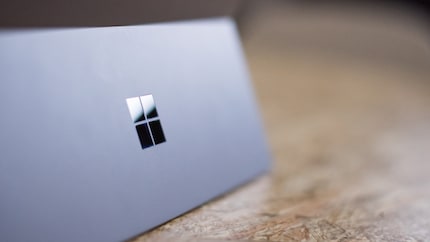
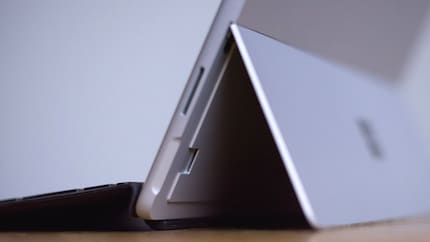
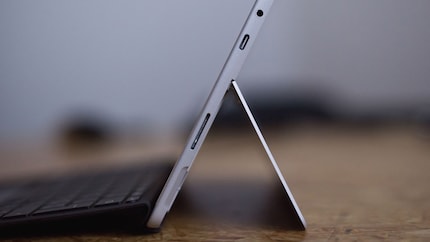
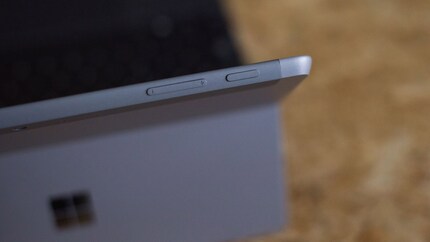
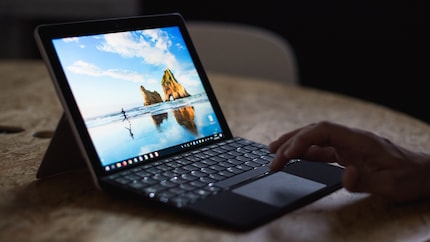
The colours look natural and the black level is perfectly fine, although by no means comparable to an OLED display. Microsoft also states a contrast ratio of 1500:1. It also has Corning Gorilla Glass 3 and should therefore be protected against shocks. As with many devices, a high-gloss display is also installed here. I don't think that's really cool, as the slightest sunlight is distracting. On the other hand, it has a stable viewing angle and can be operated with 10 fingers or a stylus. If only I had a stylus...
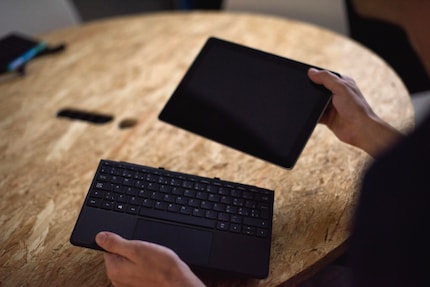
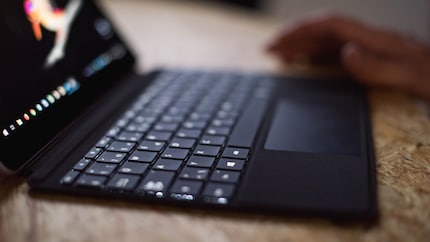
The Dolby-certified sound from the speakers mounted in the upper part to the left and right of the display sounds surprisingly good. When listening, I have the feeling that the speakers are much further apart than in reality. However, as with many tablets and notebooks, the sound is somewhat starved when you play bass-heavy sound. In addition, electric guitars sound a little out of tune (for example with America by Rammstein). If you like to listen to hard sounds, you should do this using a jack connection and your favourite headphones.
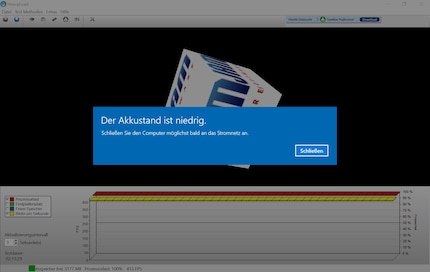

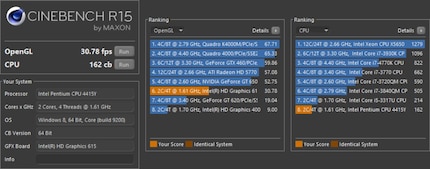
Geekbench 4 is a cross-platform benchmark. It runs on Windows, MacOS, Linux, Android and iOS. In version 4 of the CPU benchmark, the base value of 4000 points reflects the performance of an Intel Core i7-6600U clocked at 2.60 GHz. In addition to simulated real-world scenarios with which the CPU is tested (single-core and multi-core), Geekbench can also determine GPU performance in the areas of image processing and machine vision. You can also compare the results with other systems thanks to the Geekbench Brower.
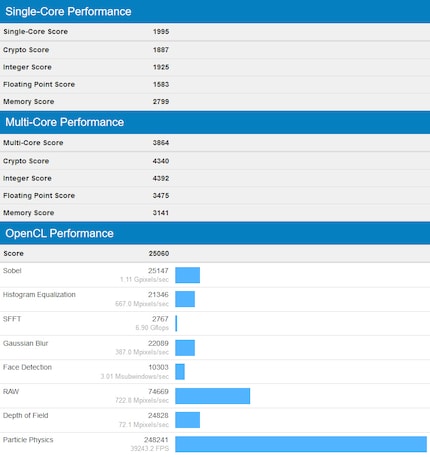


Acer Nitro VG271UM3bmiipx
2560 x 1440 pixels, 27"